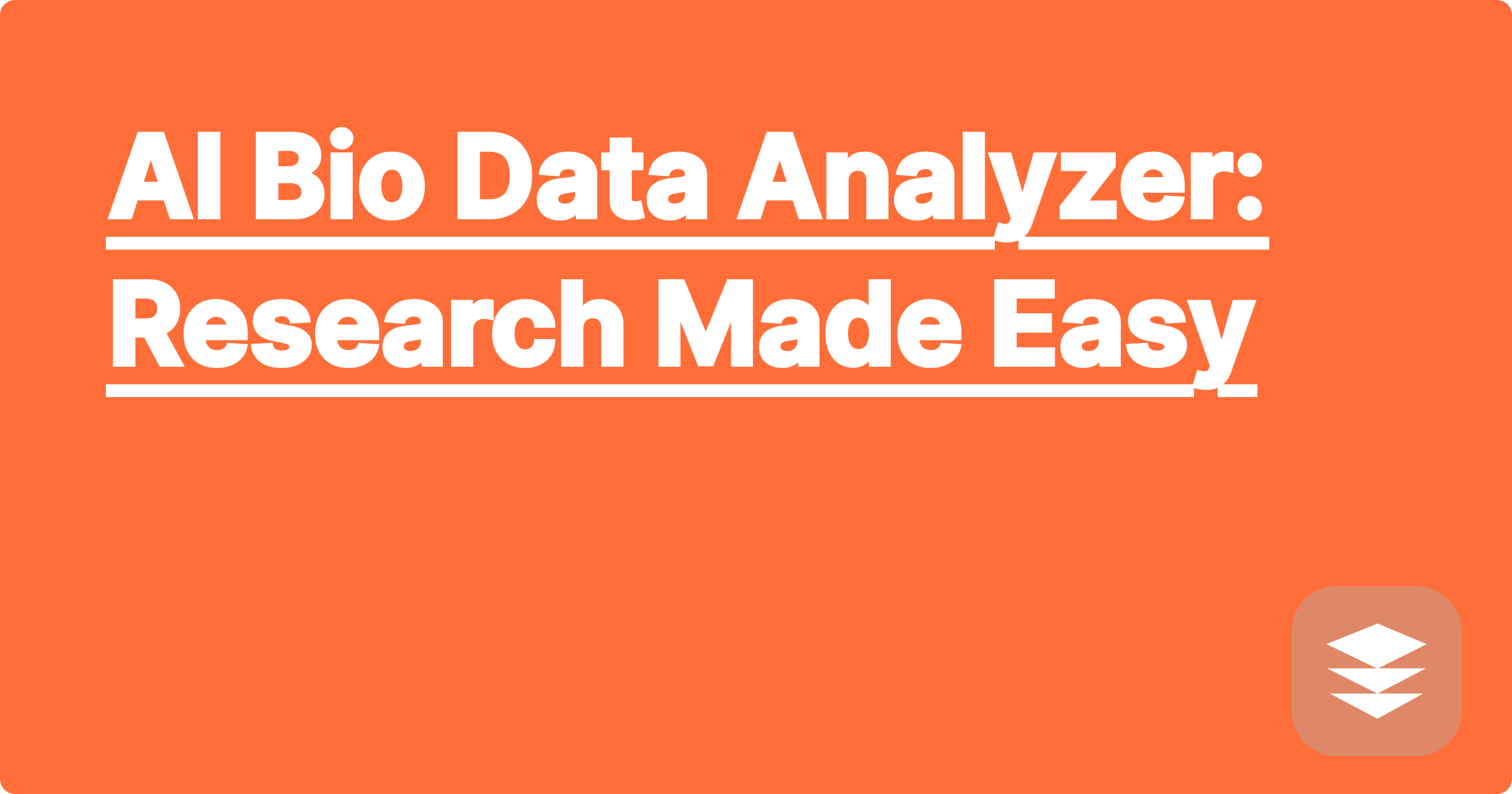
The world of STEM is exhilarating, pushing the boundaries of human knowledge and innovation. However, it's also undeniably demanding, requiring countless hours of study, research, and analysis. Many students and researchers find themselves overwhelmed by the sheer volume of information and the complex tasks they face. Wouldn't it be incredible if you had a personalized assistant to help navigate this complex landscape? Artificial intelligence is rapidly transforming the STEM landscape, offering powerful tools to streamline workflows, accelerate research, and personalize learning. This isn't just about using popular tools like ChatGPT; it's about discovering a whole ecosystem of AI-powered resources specifically designed to make your STEM journey more efficient and rewarding.
This blog post dives into the exciting world of AI-powered bio data analysis, exploring how these cutting-edge tools can revolutionize your research and learning experience. We'll move beyond the well-known AI assistants and uncover some hidden gems – niche tools that can give you a real competitive edge. We'll also introduce you to the concept of a Generalized Personal AI (GPAI) partner and demonstrate how it can become your ultimate study buddy and research assistant. Prepare to unlock a new level of productivity and discover how AI can truly empower you in your STEM endeavors.
Biological data is exploding. From genomic sequencing to proteomics, the sheer volume of information generated daily is staggering. Traditional methods of analysis are often slow, labor-intensive, and require specialized expertise. Researchers can spend weeks, even months, sifting through datasets, struggling to identify meaningful patterns and draw insightful conclusions. Students, too, grapple with the complexity of biological data, often finding it challenging to connect theoretical concepts with practical applications. This data deluge creates a significant bottleneck in research and hinders the pace of scientific discovery. Imagine trying to find a single, specific grain of sand on a vast beach. That's often what analyzing biological data feels like without the right tools.
AI offers a powerful solution to this challenge. Machine learning algorithms can sift through massive datasets, identifying patterns and correlations that would be impossible for humans to detect manually. AI-powered tools can automate tedious tasks, freeing up researchers and students to focus on higher-level analysis and interpretation. Think of AI as your personal research assistant, capable of handling the heavy lifting of data processing and analysis, allowing you to focus on the big picture. Tools like DeepVariant, developed by Google, utilize deep learning to identify genetic variations with remarkable accuracy. Similarly, AlphaFold, another groundbreaking AI tool, predicts protein structures, opening up new possibilities for drug discovery and disease research.
Integrating AI into your bio data analysis workflow doesn't have to be intimidating. Start by identifying your specific needs and challenges. Are you struggling with sequence alignment, protein structure prediction, or phylogenetic analysis? Once you've pinpointed your bottleneck, research AI tools specifically designed to address that area. Many platforms offer user-friendly interfaces and tutorials, making them accessible even to those without extensive programming experience. For example, if you're working with genomic data, explore tools like GenomeSpace, a cloud-based platform that integrates various bioinformatics tools and provides a collaborative environment. Next, experiment with different tools and compare their performance. Don't be afraid to try out several options before settling on the one that best suits your needs. Finally, remember that AI is a constantly evolving field. Stay updated on the latest advancements and be open to incorporating new tools and techniques into your workflow.
Imagine you're researching a specific disease and need to analyze gene expression data from hundreds of patients. Manually analyzing this data would be an incredibly time-consuming task. However, using an AI-powered tool like DESeq2, you can quickly identify genes that are differentially expressed between healthy and diseased individuals, providing valuable insights into the underlying mechanisms of the disease. Another example is using an AI-powered image analysis tool to quantify cell morphology in microscopy images. This can automate a tedious and subjective process, leading to more accurate and reproducible results. These are just a few examples of how AI can revolutionize bio data analysis, accelerating research and enabling new discoveries.
Leveraging AI effectively can significantly enhance your academic performance and research productivity. First, embrace the GPAI concept. Imagine having a personalized AI assistant that can help you schedule your studies, summarize research papers, and even brainstorm ideas for your next project. This personalized approach can significantly improve your time management and learning efficiency. Next, explore niche AI tools tailored to your specific STEM field. For example, if you're studying chemistry, explore tools like ChemDraw for drawing chemical structures or Synthia for retrosynthetic analysis. These specialized tools can save you countless hours and enhance your understanding of complex concepts. Finally, remember that AI is a tool, not a replacement for critical thinking. Use AI to augment your abilities, but always critically evaluate the results and ensure they align with your scientific understanding.
Your GPAI can be as simple as a combination of existing AI tools, personalized to your needs. For instance, you might integrate a calendar app with a task management tool and a research summarizer, creating a personalized system for managing your academic workload. Think of it as building your own custom AI-powered study buddy. Start small, experiment with different combinations, and refine your GPAI over time to optimize its effectiveness. By embracing these strategies and integrating AI into your workflow, you can unlock new levels of productivity, achieve academic excellence, and make a meaningful contribution to the exciting world of STEM research. Don't wait for the future; the future of STEM learning and research is here.
AI Physics Solver: Conquer Mechanics
AI for Circuits: Simulate & Design
AI Calculus Tutor: Master Integrals
AI Bio Data Analyzer: Research Made Easy
AI Robotics: Build Smart Robots
AI Stats Helper: Ace Your Exams
AI Math Solver: Problem Solving
AI Data Science: Analyze Big Data